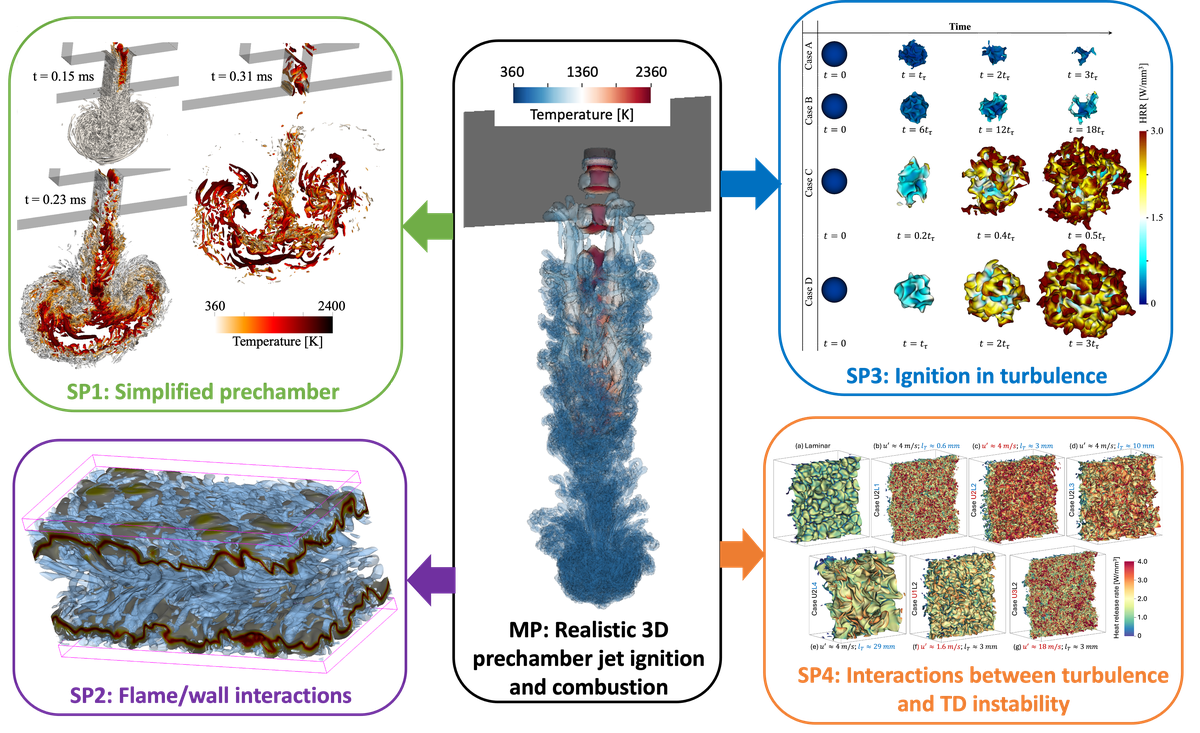NIC Excellence Project 2025/1
Direct numerical simulations of ignition and combustion in realistic pre-chamber/engine systems with NH3/H2 blend fuel

John von Neumann Excellence Project 2025/1
Prof. Dominique Thévenin (Universität Magdeburg)
Modern energy systems are transitioning towards carbon-free fuels, relying in particular on hydrogen (H2) and ammonia (NH3) combustion. However, utilizing a NH3/H2 blend fuel in practical combustion systems faces several challenges, for ignition, combustion efficiency, and pollutant emissions. A promising strategy to assist ignition and combustion in realistic engines is to employ a pre-chamber configuration. The present project tries to obtain a comprehensive understanding of the complex interactions between innovative fuels (NH3/H2 blend fuel) and new configurations (pre-chamber/engine configuration) in realistic applications using Direct Numerical Simulations (DNS) with detailed chemistry.
To enable a parametric study, a simplified geometry has been first investigated, to check the influence of orifice width, prechamber/main chamber mixtures, and prechamber volume ratio. Specifically, reactivity-stratified ignition and combustion has been checked [C. Chi & D. Th venin, Fuel, 347, 128387 (2023)]. In such a system, the impact of the wall is strong.

Therefore, flame/wall interactions have been studied in detail, regarding flame quenching characteristics [C. Chi et al., Proc. Combust. Inst., 40, 105276 (2024)] and near-wall pollutant emissions [C. Chi, Combust. Flame, 269, 113723 (2024)]. Additionally, the effect of turbulence on ignition probability and flame kernel development controls turbulent jet ignition. Such effects (quantified by Reynolds and Karlovitz numbers) would guide the design of prechamber/engine systems for a more efficient and stable ignition and combustion. Since H2 diffuses much faster than NH3 and air, such a flame would usually lead to a thermodiffusive (TD) instability, affecting flame propagation. Therefore, interactions between turbulence and TD instability are studied separately, since DNS of the full configurations are excessively expensive. To speed up the simulations, an on-the-fly artificial neural network for chemical kinetics integration [C. Chi et al., Combust. Flame, 226, 467-477 (2021)] and a physics-augmented flamelet neural network for flame tabulation [C. Chi et al., Combust. Flame, 245, 112325 (2022)] have been applied. The final DNS results are analyzed in detail to reveal the underlying mechanisms for transient ignition, flame extinction, and turbulence/flame/wall interactions. This provides essential information for the development of reduced models for such configurations based on Large-Eddy Simulations (LES) and Reynolds-Averaged Navier-Stokes (RANS) models.






